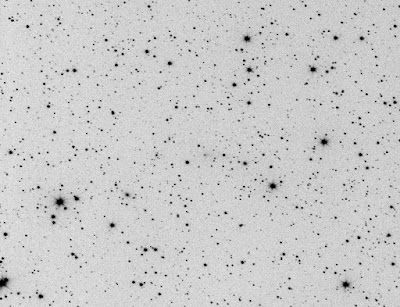Comet 69P/Taylor will reach its perihelion (the closest
point
on its orbit to the Sun) on Monday 18 March 2019, when it will be
approximately 2.28 AU from the Sun (i.e. 228% of the distance between
the
Earth and the Sun, between the orbits of Mars and Jupiter). The comet will be in the constellation of Taurus seen
from the Earth in the evening, though it will not be visible without a very good telescope.
The orbit and current position of Comet 69P/Taylor. In The Sky.
Comet 69P/Taylor was discovered on 24 November 1915 by Clement Taylor, an amateur astronomer based in Cape Town, South Africa. The designation 69P/Taylor implies that it is a Periodic Comet (comet which orbits the Sun in less than 200 years), that it was discovered by Taylor, and that it was the 69th comet discovered.
Comet 69P/Taylor, centre of field, imaged on 13 December 2004. Michael Jager & Gerald Rhemann/Seiichi Yoshida's Comet Page.
69P/Taylor has an orbital period of 2804 days (7.68 years) and a
highly eccentric
orbit tilted at an angle of 22.0° to the plain of the Solar System, that
brings it from 2.28 AU from the Sun at perihelion (228% of the distance
between the Earth and the Sun);
to 5.50 AU from the Sun at aphelion (5.50 times as far from the Sun as
the Earth or roughly the distance at which Jupiter orbits). As a
comet with a period of less
than 20 years with an orbit angled at less than 30° to the plane of the
Solar System, 69P/Taylor is considered to be a Jupiter Family Comet.
See also...
Follow Sciency Thoughts on Facebook.








